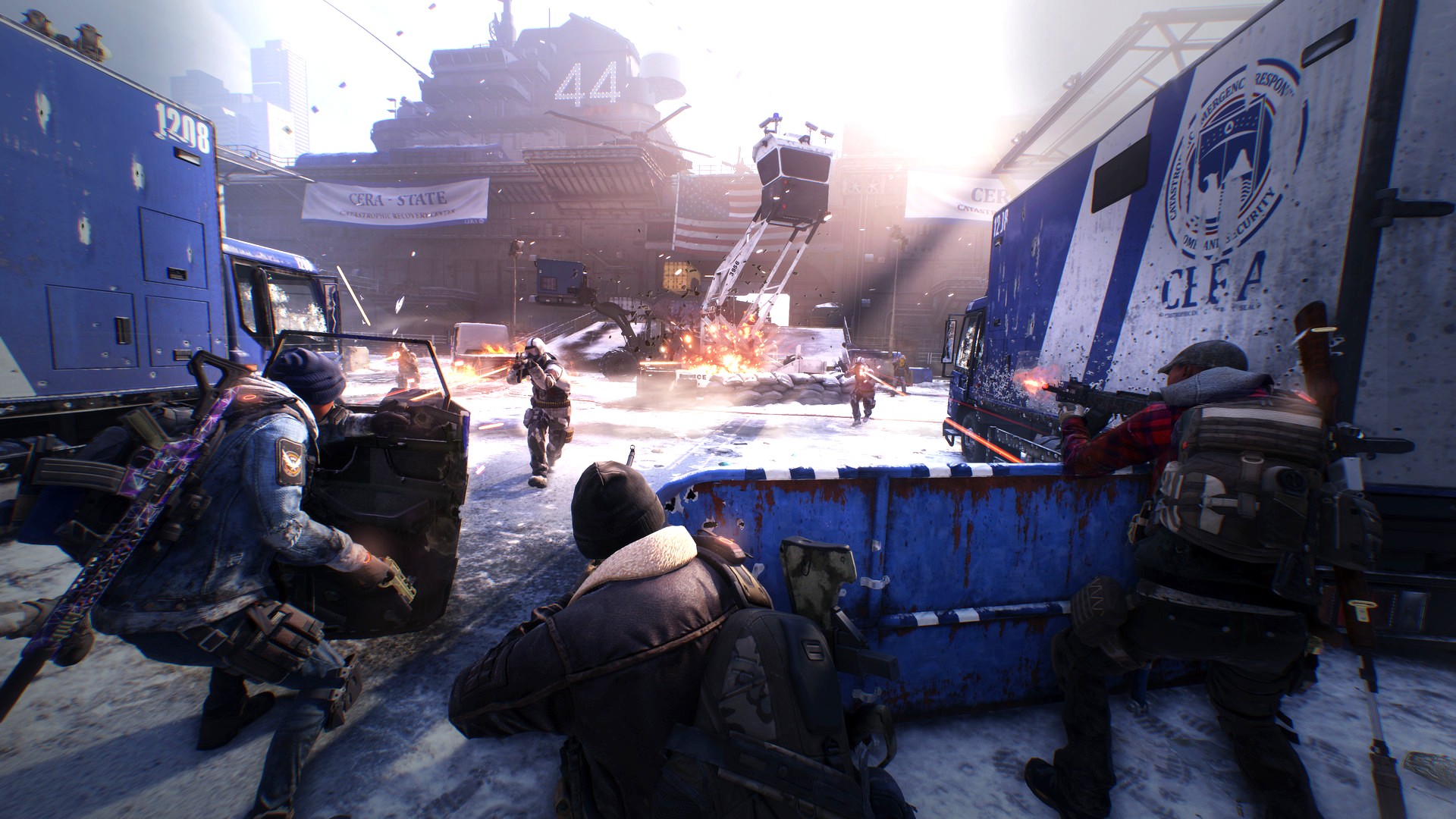The Walking Dead: Saints & Sinners is the first of its kind. This VR-only zombie survival action RPG puts players in an open-world post-apocalyptic New Orleans that's been overrun by water and zombies. It's an incredible attempt at providing far more meat than most VR games deliver, with solid mechanics, character interactions with consequence-forming dialog decisions, an intuitive interface, realistic physics complete with simulated arms and object weight, and the most important thing in any good zombie game: fear.

Bottom line: The Walking Dead: Saints & Sinners raises expectations for how in-depth a VR game can be. This is a full-length action-RPG with all the trappings you'd expect from one. It's about surviving against all odds, planning your next days, and unraveling the truth of what happened in this once beautiful city. Oh, and you'll lob a few zombie heads off along the way, too.
Pros
- Oh-so-satisfying weapon physics
- An intriguing story that feels organic instead of forced
- Intuitive crafting and scavenging system
- Action and dialog decisions have weighty consequences
- Perfect for standing and seated play
Cons
- Movement restrictions can be disorientating
- Inventory management can feel clunky in stressful situations
- Item and quest tracking feels a bit useless
The Walking Dead: Saints & Sinners the basics
When you think of the zombie apocalypse actually happening, what sorts of images does your imagination conjure? If your answer is along the lines of desperation, desolation, and a new determination to survive despite the odds obviously not being in your favor, then The Walking Dead: Saints & Sinners absolutely nails your vision of this post-apocalyptic future. This makes sense, too, since this game is based heavily on The Walking Dead comics rather than the show on AMC.
In this semi-open world action RPG, you'll find yourself working through each day, from dawn to dusk, scavenging the land for artifacts of a bygone era in order to craft better weapons, clothing, food, and other ways to enhance your survival. Each day grows more bleak, reducing the number and quality of items in the world and increasing the zombie count, encouraging players to strategize and plan ahead rather than mindlessly roaming the land. It's this bleak desolation that so epitomizes what a real zombie apocalypse would likely feel like.
Saints & Sinners takes place in New Orleans, a city now overrun by zombies, apparently due to some government malfeasance and has, subsequently, undergone significant flooding because the levies are no longer maintained. This flooded geography has created "islands" of sorts around the city, with each island acting as an open-world area for players to explore.
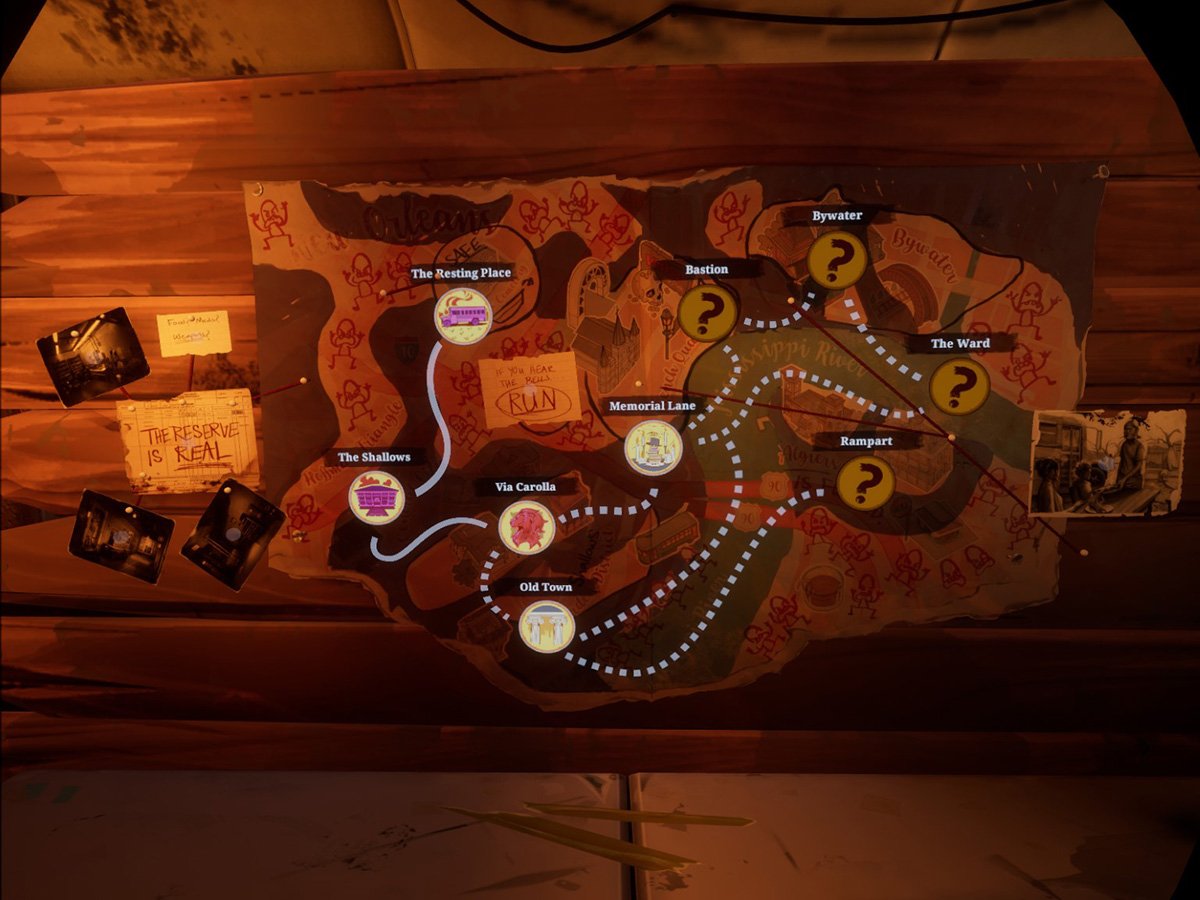
A watch on your wrist will alert you when the witching hour is nigh, signalling you to return to your camp via boat in order to scrap the goodies you found that day, craft new items, and rest. Saints & Sinners is a wholly single-player game at this time and encourages players to work with NPCs instead of providing other human players, a la Left 4 Dead.
Saints & Sinners focuses heavily on pseudo-realism, stats, and inventory management that will force you to be disciplined and efficient.
Natural inventory management feels naturally clumsy, a reality that can sometimes result in frustration. Items are stored in several places, all easily accessible, depending on what you need. Weapons are located in three locations: one on each hip (left and right), and one over your right shoulder. Reach for any of these three locations and squeeze the grip button to grab your weapon of choice. It's something that makes sense and never feels odd or too "video-gamey".
Much as you'll find in something like Vacation simulator, anything that doesn't fit in one of the three aforementioned places will go into your backpack. When you grab an item, just drop it over your left shoulder and it gets automatically added to your backpack, provided there's enough room for the item. Easy peasy, nothing difficult there.
All the latest news, reviews, and guides for Windows and Xbox diehards.
Pulling your backpack off your left shoulder and inspecting its contents can be a little awkward though, as the arrows to move between pages of inventory are tiny and near impossible to touch when you're scrambling to get away from enemies.
Each inventory slot is also quite small, and more than once I found myself grabbing the wrong item while being chased by a few zombies. Some sort of automatic inventory sorting would help a lot, as you can drop items into the "automatic" slot and it'll drop them in the next available spot, but it doesn't sort the items you place.
It took me a while to understand exactly why I was scavenging soda cans and dirty gauze bandages, but holding an item in front of your face will reveal some important stats about it. The item's quality, its purpose, and what materials you'll get from scrapping it. Items are seemingly random throughout the world though, so finding the exact thing to turn into usable scrap can be a challenge.
Reaching for your journal provides a wealth of information which, just like item scavenging, took me a little while to get used to. Tracking quests and items needed for recipes will simply add a to-do list to your journal, but there's no waypoints or markers to make on the map inside; instead, the game relies entirely on your ability to naturally navigate the environment and provides photo clues to help you get to where you need to go. It's a pretty natural way of doing things that, once again, makes sense when you think of doing this in a real situation instead of "video-gamey".
It's clear the developers wanted to engross players in an experience that encourages lots of manual organization, paying attention to stats, environmental awareness, and time management. These are great, difficulty and realism-enhancing traits, but they're definitely traits that are going to be polarizing for some players.
The Walking Dead: Saints & Sinners a feast for the senses
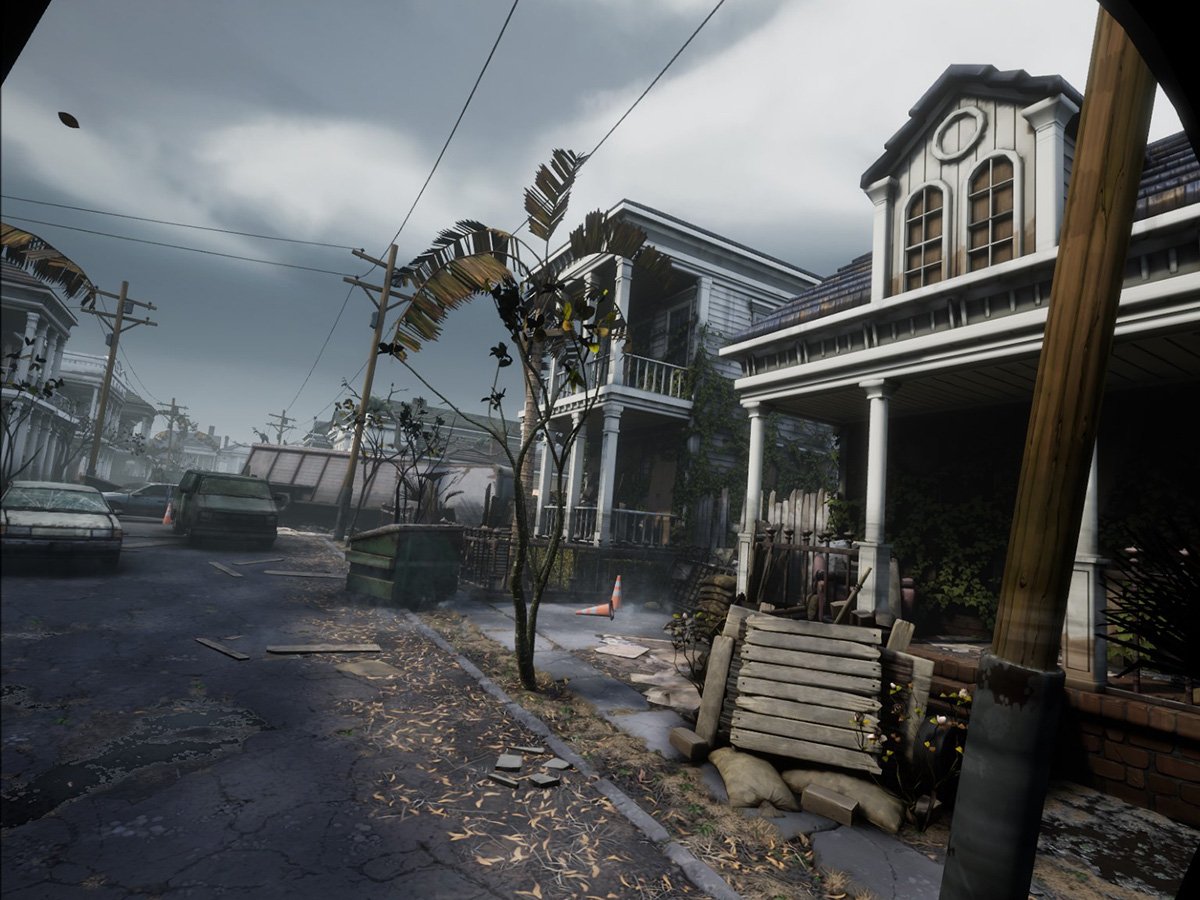
Visually, the game would be resplendent if it weren't for the obvious drab tones used throughout the world. But a vibrant zombie game would feel a bit weird, especially one that takes itself as serious as a Walking Dead title should. If you've ever played Telltale's The Walking Dead series, you'll feel right at home here. Unlike those games, however, the environments are a bit more detailed than the characters, although everything has a slight comic-book shaded aesthetic.
In most situations, you'll be able to admire the level of detail put into wrecked neighborhood scenes, misty crypts, ruined houses, and the reflections and lighting that enhances the mood. Gore is inherent in a zombie game, and anyone who finds themselves a fan of special effects, especially gore scenes, will certainly find the action in Saints & Sinners is more than up to par; it exceeds expectations.
Thrusting a screwdriver through the head of a zombie while smashing another's skull in with a baseball bat riddled with nails isn't just satisfying, it feels oddly realistic. The physical interactions that objects in the environment have with one another makes me wish that buildings and other details strewn throughout the environment were more interactive, as it would be amazing to drop cars on zombies or crush entire housefulls of them with well-placed explosives.
Those physical interactions are a large part of what makes the game believable, and the sound design in the game completes the package. It's not just the squashing of skulls or the shlunking sound of a weapon being used, it's the telltale effects that let you know you've been spotted by a zombie or a human. Things that are instantly recognizable via sound queues that prove real thought was put into these sound effects, not just canned pre-recorded clips.
I'm not sure many will come away remembering the musical score, but there will be plenty of nightmares filled with the aggressive sounds of zombies hurtling themselves toward you in an effort to end your existence entirely. Realism isn't just about visuals, sound, or environmental interaction. It's about the entire package put together, and The Walking Dead: Saints & Sinners excels at those goals.
The Walking Dead: Saints & Sinners satisfying combat, weird movement
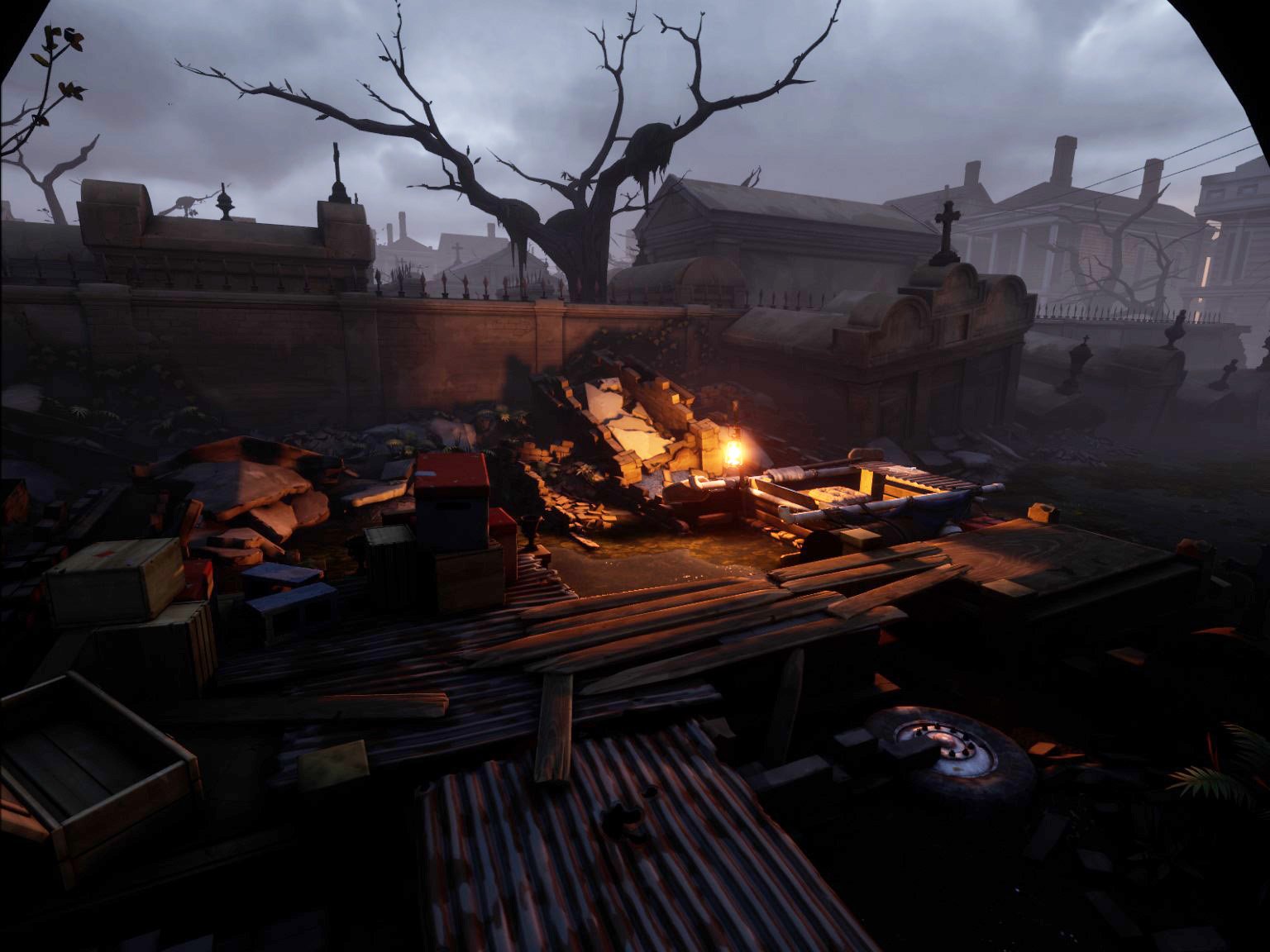
Much as you'll find in Boneworks, movement and combat in The Walking Dead: Saints & Sinners is based around theoretical positioning of virtual arms in proportion to where your hands and shoulders reside. This means grabbing an object in the game, be it a wine bottle or a shotgun, looks as if you're using your arms to do it, not just a pair of floating hands. The arms aren't attached to a body, though, so realism only goes so far.
Each object has a physical weight to it that lends to its usefulness on any situation. Heavy objects are generally only good for throwing at enemies or causing distractions; You won't typically be able to put enough force into the motion to kill a zombie with a blunt object. Axes, likewise, are a lot heavier and more awkward to swing than a shiv or stab with a screwdriver.
That weight also makes heavier objects a bit more awkward than if you were holding them in real life. It took me quite a while to feel comfortable with using heavy objects that had a specific sharp point, like a nail at the end of a piece of wood, or the sharp edge to an axe. Spiked bats, for instance, were a lot more forgiving and easier to use.
Lopping the heads off a small hoard of zombies is a sort of beauty only properly understood upon weapon mastery; a true herald of good mechanics.
You'll want to get better with those more point-specific weapons though, as they increase the fluidity of combat. Easy weapons, like screwdrivers, will bury themselves in zombie's skulls and require a fair bit of force and a few extra seconds to pull out of the skull before it can be used again.
When you're being chased by several zombies at once, these extra seconds will almost certainly mean your death. Lopping the heads off a small hoard of zombies is a sort of beauty only properly understood upon weapon mastery; a true herald of good mechanics. It's extremely easy to get overwhelmed by even two zombies, let alone a small hoard, and you'll need to play it smart in order to survive.
The only real issue I had with the movement is the completely unrealistic take on crouching and sneaking. Instead of physically crouching, as you would normally do on any VR game with roomscale support, you'll have to press a button to have your character crouch. On the Oculus Rift S, that button is the B button on the right controller.
Try to physically crouch and you'll be greeted by an insanely dizzying warping of the entire world that keeps the floor at standing height no matter how your body is positioned in the real world. On the bright side, that also means you can sit criss-cross-applesauce on the floor while playing Saints & Sinners if you really wanted to.
While this is an excellent tool for accessibility, particularly for those who might be disabled (or can't remain standing for long periods of time) and still want to experience a standing-only game, it would have been better if this were an optional toggle.
Update 1-27-20: Skydance Interactive has released an alpha patch that features the ability to physically crouch instead of pressing a button. Once this functionality is brought to the public version of the game as a normal option, we will re-evaluate this portion of the review.
Similarly, folks who don't want to physically spin in place to look and move around the world can use the right stick to virtually turn their character. Options exist for both smooth turning and snap turning. Regular movement is handled via the left joystick with no alternatives, so if smooth locomotion makes you sick, this isn't your game.
The Walking Dead: Saints & Sinners survival of the fittest
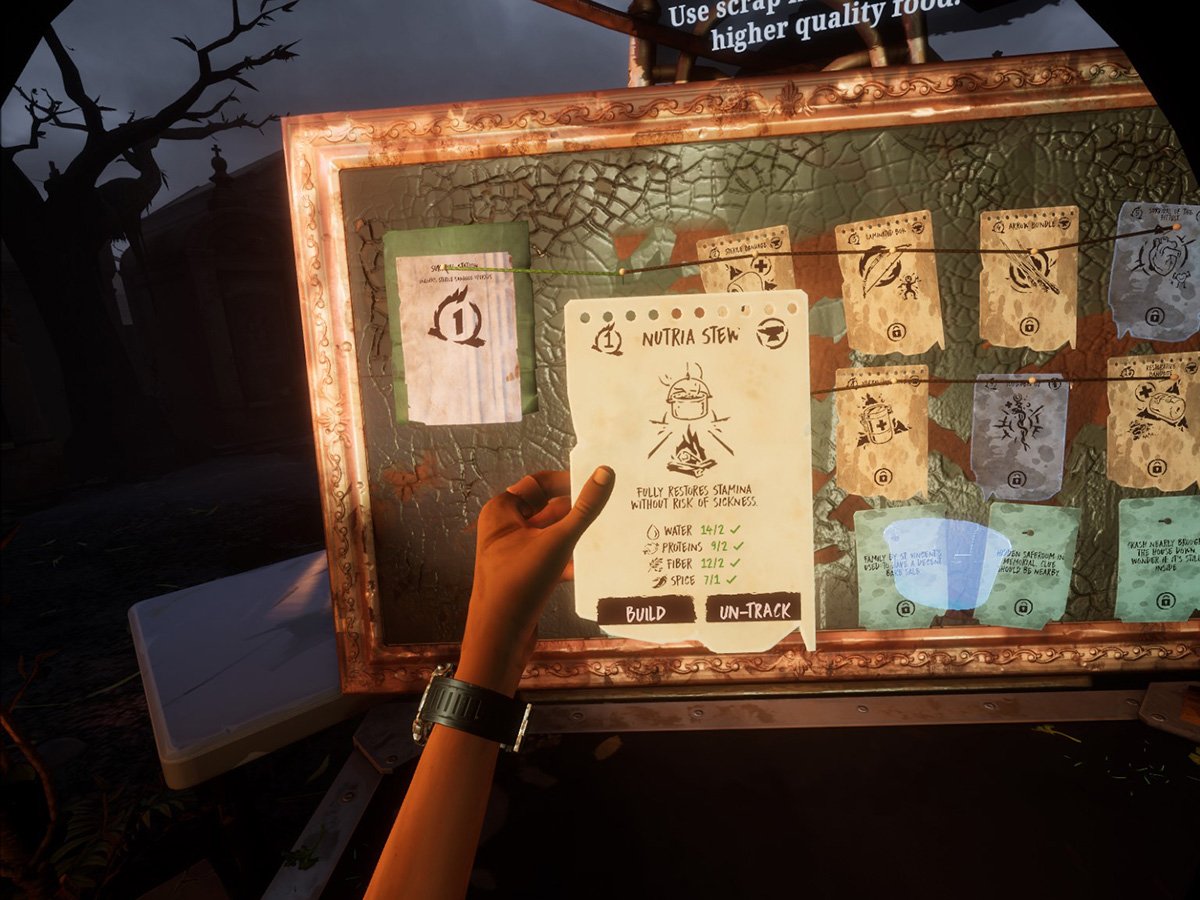
Customization is certainly the name of the game, as you can play The Walking Dead: Saints & Sinners in almost any way you choose. Prefer melee weapons over guns? Craft those to your heart's content. Would you rather scale buildings and avoid zombies rather than go in Rambo-style? Entirely feasible and even encouraged.
What may surprise many folks is the fact that proper dialog trees exist in the game, with actual decisions that can be made. This is presented in a way that's similar to games like Fallout, where a character speaks to you and waits for your response. Conversations always give at least two options for response and will change an NPC's opinion of your character throughout the game.
Want to go to the dark side and murder humans and zombies equally? You can do that. But actions have consequences, and you'll find later in the game that some gangs won't appreciate your lack of loyalty to their kin. Occasionally you might run across a lone vigilante who cares less for justice and more for themselves, requiring you turn over all of your medical supplies or food in return for your life. Or you could also just choose to attack this so-and-so and teach him a lesson he'll never forget. The choice is yours.
Saints & Sinners is about a 15-hour game that will last longer depending on how much of a completionist you are. There's plenty to see and do, lots of characters to interact with, and an interesting story to follow that's worth fighting through.
Are warring gangs the bigger problem, or is it the government and its lack of real assistance to the people that caused all the mess? You'll unravel that, and a bit more as you trek through the best single-player zombie game in years, and easily the most robust zombie title you'll find on any VR platform.
Folks have been clamoring for "real" games on VR platforms for years, and The Walking Dead: Saints & Sinners fills that gap in every way. As a full-length game, this single-player action RPG provides solid, intuitive mechanics, visceral combat, and an open world with lots to see and do. The detailed graphics, realistic physics, multiple ways to play and solve solutions, and the robust scavenging and crafting systems will keep you coming back for more until you've seen it all. It's not Fallout-level deep, but it's far more than what we've come to expect in the world of VR.
The game was reviewed on an Oculus Rift S and Steam with codes provided by the publisher.

Nick started with DOS and NES and uses those fond memories of floppy disks and cartridges to fuel his opinions on modern tech. Whether it's VR, smart home gadgets, or something else that beeps and boops, he's been writing about it since 2011. Reach him on Twitter or Instagram @Gwanatu

